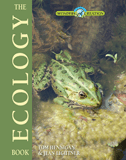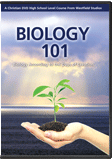Parasitic Plants
Abstract
Parasitism is a subject that not many people think about and even fewer address from a biblical perspective. Parasitic plants are even less frequently addressed. Most of us think of plants as stationary and inactive rather than actively seeking nutrients. Yet parasitic plants do exist, comprising about 1% of flowering plants.1 They are notorious crop pests, particularly in developing countries. Witchweed alone does an estimated three billion dollars of crop damage per year.2 In light of a perfect pre-fall creation, parasitic plants may appear to be a thorny issue for a biblical worldview. However, digging a little deeper reveals a different, more biblical understanding.
Mechanism
As far back as 1867, a botanical journal published a thorough review of parasitic plant features.3 About 4500 species of parasitic plants exist across twenty-eight different plant families.4 With that many species in that many families, there are vast differences between the various types of parasitic plants; nevertheless, there are some broad similarities. Note that there is some debate over what scientists mean when they say parasitic plants. Some hold to a broad definition of parasitism that includes plants that indirectly gain sustenance from a host, or plants that share nutrients directly with one another. Others prefer a tighter definition that includes only plants that gain direct sustenance from the host.5 Since the latter definition refers to what is more commonly thought of as parasite, it will be the definition used in this paper.
All parasitic plants use a specialized organ called a haustorium to connect to their host. The haustorium is a multicellular organ that taps into the host to siphon off nutrients.6 Depending on the plants involved, the haustorium targets different tissues. In most cases, the haustorium links into either the xylem, the phloem, or both, from which it draws nutrients out of the host. In xylem feeders, it is siphoning off nutrients necessary for its photosynthesis, such as nitrogen and water. In phloem feeders, it is siphoning off the direct results of photosynthesis as well as other products.7 Depending on the type of parasite, it attaches in different ways to its host. In dodder plants of genus Cuscuta, the haustorium forms as a part of stem tissue because it attaches to the stem of the host while the owl clovers of genus Triphysaria form their haustorium from root tissue as they attach to the roots of their host.8
The haustorium forms as a result of the parasitic plant being exposed to chemicals called volatiles, which are given off by plants.9 In particular, strigolactones have been shown to stimulate the germination for some parasitic plants.10 Strigolactones are plant hormones that are involved in plant branching, among other functions. Seeds of certain parasitic plants will not germinate unless they can sense these particular hormones.11 Most of these parasitic plants need to attach to a host within a few days of germination, or they will die.12
Parasitism
Beyond these similarities, most parasitic plants share little in common with one another. They come in two major types. Some have roots, while others do not. Some have flowers, while others lack them. Some parasitic plants have chlorophyll and are photosynthetic for at least part of their life, only requiring water and some nutrients from their host. These are called hemiparasites. Some hemiparasites do not require a host. Holoparasites, by contrast, are non-photosynthetic and almost always completely lack chlorophyll.13 All holoparasites are obligate parasitic plants and almost all are root parasites. Both types take nutrients from their host, but some need more and different nutrients than others.
Plants that are victimized by parasitic plants are not entirely defenseless. Sunflowers produce a special class of peptides called defensins, which can help fight broomrapes, a particular type of root parasitic plant.14 Other plants are known to produce chemicals that repel or damage parasitic plants. Wheat plants have been shown to produce volatiles that repel dodder plants from attaching to them.15 Interestingly, plants seem to respond to parasitic plants in the same way they do to herbivores: by producing volatiles.16 When responding to herbivores, these volatiles serve as communicatory cues to other plants and even predatory creatures, depending on the circumstances and plants involved. For example, some plants, such as tomatoes, warn other plants that insect herbivores are nearby, while others such as the rock cress release volatiles, which attract predators to feed on the herbivores. All these communications take place through volatiles.
Evolution
According to evolutionary dogma, parasitic plants underwent multiple periods of convergent evolution, evolving separately in at least twelve lineages.17 In every instance, this evolution supposedly took place in dicots.18 This has left some evolutionists puzzled. “Strangely, true parasitism has apparently never evolved in monocots.”19 This raises questions about why only dicots have evolved into a parasitic state, questions evolutionists appear not to have wrestled with much. One phylogenetic study claims that there is a particular gene correlated with parasitism that is not often found in monocots. However, even this is highly speculative, and the researchers do not strongly push the point.20
The way evolutionists envision it, the haustorium had to be the first component of the parasitic system to form. But this is far from the only component, and there must be a mechanism to ensure that the parasitic plant does not attempt to parasitize itself and correctly selects its host plant. Evolutionists struggle to explain these features. Attempting to explain the origin of the haustorium, they cite the genetics of root development and the inducing action of strigolactones.21 However, neither of these things explains the origin of the genes that produce the haustorium. They don’t explain either why the plants’ roots developed the ability to sense strigolactones. There is no explanation for the haustorium’s ability to distinguish itself from its host. “The mechanisms by which parasitic plants do not parasitize their own roots are not known.”22 This quote could equally be applied to plants that parasitize stems. Evolutionary scientists do not seem to have an explanation for some of the biggest factors in the parasitic plant lifestyle.
Perspective
From a biblical perspective, parasitic plants require a bit of thought. They clearly appear designed in at least some sense, despite their seemingly nefarious business. The haustorium and the ability to distinguish between self and not-self would certainly seem to have been designed. Superficially, however, parasitism would not seem to qualify as a “very good” aspect of creation, which would conflict with God’s statement in Genesis 1:31. The apparent conflict can be resolved when other Scriptures are taken into account. According to the Bible, plants are not alive. They do not have the “breath of life.” Plant death would certainly have been possible prior to the fall, and indeed, given God commanded all creatures to eat plants, it seems very likely to have occurred. There does not seem to be a restriction that would prevent plants from feeding on one another. Thus a plant parasitizing another plant in the pre-fall world would not violate God’s “very good” statement.
That said, there is some nuance here. Parasitic plants today are considered “keystone species” in their ecosystems in some cases.23 It means they strongly impact the environment around them. Parasitic plants make their host more susceptible to herbivory by weakening it.24 In a pre-fall world, this could have helped slow the spread of rapidly growing plants to keep the environment in balance.
Alternatively, parasitic plants may have been commensal or mutualistic before the fall and degenerated through mutation and genomic reduction to become parasitic after the fall. Evolutionists themselves have claimed that the mutation rate of parasitic plants in mtDNA (mitochondrial DNA), cpDNA (chloroplast DNA), and nuclear DNA tends to be much faster than that of their non-parasitic cousins, so this is certainly plausible.25 Some parasitic plants, particularly holoparasites, have lost the genes necessary for the production of chlorophyll and many other typical plant functions.26 Some appear to have almost completely lost their chloroplast DNA.27 While this large scale loss of genetic information does nothing to advance the evolutionary process, or create new organisms, it is consistent with the possibility of genetic entropy weakening certain plants in the post-fall world.
Parasitic plants do not pose a challenge to the biblical worldview. While we cannot be certain what their pre-fall form and function were, or even if all of them performed the same function at that time, their parasitism is not a difficulty for the biblical worldview. Parasitic plants could have existed in the pre-fall world as inhibitors on rapidly growing plants or could have devolved in the post-fall world as a result of the curse or both. No matter how they existed in the past, parasitism in the present is a reminder of the truth of Scripture; that the world is under a curse, brought on by man’s sin (Romans 8:22).
Answers in Depth
2019 Volume 14
Answers in Depth explores the biblical worldview in addressing modern scientific research, history, current events, popular media, theology, and much more.
Browse VolumeFootnotes
- Harro J. Bouwmeester et al., “Rhizosphere communication of plants, parasitic plants and AM fungi” TRENDS in Plant Science 12, no. 5 (2007): 224-230, https://www2.eez.csic.es/mycorrhizaandbioticstresslab/Rhizosphere%20communication%20(Bouwmeester%20et%20al%202007).pdf.
- Norman Wickett et al., “Transcriptomes of the Parasitic Plant Family Orobanchaceae Reveal Surprising Conservation of Chlorophyll Synthesis.” Current Biology 21, no.24 (2011): 2098-2104, https://www.sciencedirect.com/science/article/pii/S0960982211012607.
- Julian M. Hibberd and W. Dieter Jeschke, “Solute flux into parasitic plants” Journal of Experimental Botany 52, no. 363 (2001): 2043-2049, https://academic.oup.com/jxb/article/52/363/2043/488464.
- Satoko Yoshida et al., “The Haustorium, a Specialized Invasive Organ in Parasitic Plants” Annual Review of Plant Biology 67 (2016): 643-647, https://www.researchgate.net/profile/Songkui_Cui/publication/301737323_The_Haustorium_a_Specialized_Invasive_Organ_in_Parasitic_Plants/links/57302c0b08ae7441519052af/The-Haustorium-a-Specialized-Invasive-Organ-in-Parasitic-Plants.pdf.
- Daniel L. Nickrent, “Parasitic Plants of the World,” in Parasitic Plants of the Iberian Peninsula and Balearic Islands, eds. J. A. López-Sáez, P. Catalán and L. Sáez (Madrid: Mundi-Prensa Libros, 2002), 7-27, https://nickrentlab.siu.edu/NickrentPDFs/Chapter2.pdf.
- Yoshida et al., 2016.
- Hibberd and Jeschke, 2001.
- Yoshida et al., 2016.
- Justin B. Runyon, Mark C. Mescher and Consuelo M. de Moraes, “Volatile Chemical Cues Guide Host Location and Host Selection by Parasitic Plants,” Science 313, no. 5795 (2006): 1964-1967, https://www.fs.fed.us/rm/pubs_other/rmrs_2006_runyon_j001.pdf.
- Kaori Yoneyama et al., “Strigolactones, host recognition signals for root parasitic plants and arbuscular mycorrhizal fungi, from Fabaceae plants,” New Phytologist 179, no. 2 (2008): 484-494, https://nph.onlinelibrary.wiley.com/doi/full/10.1111/j.1469-8137.2008.02462.x.
- Koichi Yoneyama et al.,“Strigolactones as Germination Stimulants for Root Parasitic Plants,” Plant and Cell Physiology 51, no. 7 (2010): 1095-1103, https://academic.oup.com/pcp/article/51/7/1095/1910944.
- Bouwmeester et al., 2007.
- Nickrent, 2002.
- Axel de Zélicourt et al., “Ha-DEF1, a sunflower defensin, induces cell death in Orobanche parasitic plants,” Planta 226, no. 3 (2007): 591-600, https://www.researchgate.net/profile/Philippe_Simoneau/publication/6432745_Ha-DEF1_a_sunflower_defensin_induces_cell_death_in_Orobanche_parasitic_plants/links/54f9939d0cf2ccffe9e1878f.pdf.
- Simcha Lev-Yadun, “Does chemical aposematic (warning) signaling occur between host plants and their potential parasitic plants?” Plant Signaling & Behavior 8, no. 7 (2013): e24907-1-e24907-2, https://www.tandfonline.com/doi/full/10.4161/psb.24907.
- Justin Runyon, Mark C. Mescher, and Consuelo M. de Moraes, “Plant defenses against parasitic plants show similarities to those induced by herbivores and pathogens,” Plant Signaling & Behavior 5, no. 8 (2010): 929-931, https://www.tandfonline.com/doi/full/10.4161/psb.5.8.11772.
- James H. Westwood et al., “The evolution of parasitism in plants” TRENDS in Plant Science 30, no. 10 (2010): 1-9, https://psfaculty.plantsciences.ucdavis.edu/yoder/Manuscripts/2010%20Westwood%20TIPS.pdf.
- Dicots is an abbreviation for the type of plants with two cotyledons, properly called dicotyledons. Likewise, monocots is an abbreviation for a plant with just one cotyledon, called a monocot. The cotyledon is part of the plant embryo within the seed which hold or access stored nutrients.
- Daniel L. Nickrent and R. Joel Duff, “Molecular Studies of Parasitic Plants Using Ribosome RNA,” in Advances in Parasitic Plant Research eds. M.T. Moreno, J.I. Cubero, D. Berner, D. Joel, L.J. Musselman and C. Parker (Cordoba, Spain: Dirección General de Investigación Agraria, 1996), 28-52, https://www.researchgate.net/profile/Daniel_Nickrent/publication/265273059_Molecular_studies_of_parasitic_plants_using_ribosomal_RNA/links/57be0a1908ae2f5eb32de55e/Molecular-studies-of-parasitic-plants-using-ribosomal-RNA.pdf.
- Todd J. Barkman et al., “Mitochondrial DNA suggests at least 11 origins of parasitism and reveals genomic chimerism in parasitic plants.” BMC Evolutionary Biology 7 (2007), https://bmcevolbiol.biomedcentral.com/articles/10.1186/1471-2148-7-248.
- Caitlin E. Conn et al., “Convergent evolution of strigolactone perception enabled host detection in parasitic plants,” Science 349, no. 6247 (2015): 540-543, https://science.sciencemag.org/content/349/6247/540.
- Westwood et al., 2010.
- Malcom C. Press and Gareth K. Phoenix “Impacts of parasitic plants on natural communities,” New Phytologist 166, no.3 (2005): 737-751, https://nph.onlinelibrary.wiley.com/doi/full/10.1111/j.1469-8137.2005.01358.x.
- Justin B. Runyon, Mark C. Mescher, and Consuelo M. de Moraes, “Parasitism by Cuscuta pentagona Attenuates Host Plant Defenses against Insect Herbivores,” Plant Physiology 146 no. 3 (2008): 987-995. http://www.plantphysiol.org/content/plantphysiol/146/3/987.full.pdf.
- Lindell Bromham, Peter F. Cowman, and Robert Lanfear, “Parasitic plants have increased rates of molecular evolution across all three genomes” BMC Evolutionary Biology 13 (2013), https://bmcevolbiol.biomedcentral.com/articles/10.1186/1471-2148-13-126.
- Susann Wicke et al., “Mechanisms of Functional and Physical Genome Reduction in Photosynthetic and Nonphotosynthetic Parasitic Plants of the Broomrape Family.” The Plant Cell 25 (2013): 3711-3725, http://www.plantcell.org/content/plantcell/25/10/3711.full.pdf.
- Jeanmarie Molina et al., “Possible loss of the chloroplast Genome in Parasitic Flowering Plant Rafflesia lagascae (Rafflesiaceae),” 31, no. 4 (2014): 793-803, https://academic.oup.com/mbe/article/31/4/793/1110087.
Recommended Resources

Answers in Genesis is an apologetics ministry, dedicated to helping Christians defend their faith and proclaim the good news of Jesus Christ.
- Customer Service 800.778.3390
- © 2024 Answers in Genesis




